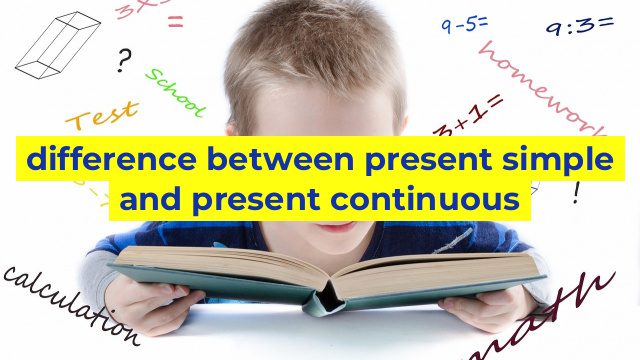The Difference Between Present Simple and Present Continuous in English Grammar
As you start learning English, one of the earliest concepts you will encounter is the use of the present tense. You will quickly learn that there are two types of present tense: present simple and present continuous. While they may seem similar at first, there is actually a significant difference in how they are used. In this article, we will explore their differences so that you can use them with confidence in your English communication.
Present Simple
The present simple tense is used to refer to actions or situations that are general or habitual. It is used to talk about something that happens regularly or always. It can also be used to talk about something that is a permanent fact or condition. Additionally, it can be used to talk about opinions, feelings, and beliefs.
Examples:
– I go to the gym every Monday. (habitual action)
– She speaks Spanish fluently. (permanent fact)
– He believes that honesty is the best policy. (belief)
As you can see from the examples, present simple is used for things that are true in general, in present times or in the past. It is not used for actions that are happening now.
Present Continuous
The present continuous tense is used to refer to actions or situations that are happening right now or are in progress. It emphasizes the ongoing nature of the action or the temporary condition. It can also be used to talk about future actions that are already planned or arranged.
Examples:
– I am studying for my exam. (action happening now)
– She is watching TV at the moment. (action happening now)
– They are going to Paris next week. (future action planned)
As you can see from the examples, present continuous is used for actions that are happening now or in the future.
Key Differences
The key difference between present simple and present continuous is that present simple is used for habitual or general actions or statements, while present continuous is used for actions happening at the moment or in the future.
Another difference is that the present simple is used for facts that are always true whereas the present continuous is used for temporary situations.
In conclusion, understanding the difference between present simple and present continuous is important, as it can greatly impact the meaning of your sentence or communication. With practice, you will be able to confidently choose between the two tenses and express yourself accurately in English.
Table difference between present simple and present continuous
| Present Simple | Present Continuous |
|---|---|
| Used for habitual actions | Used for actions happening right now |
| I walk to work every day. | I am walking to work right now. |
| Used for general truths or facts | Used for actions in progress at the moment of speaking |
| The sun rises in the east. | I am typing on my computer. |
| Used for scheduled events or timetables | Used for temporary situations that may not be happening at other times |
| The train leaves at 8pm. | I am staying in a hotel while I look for a new apartment. |


